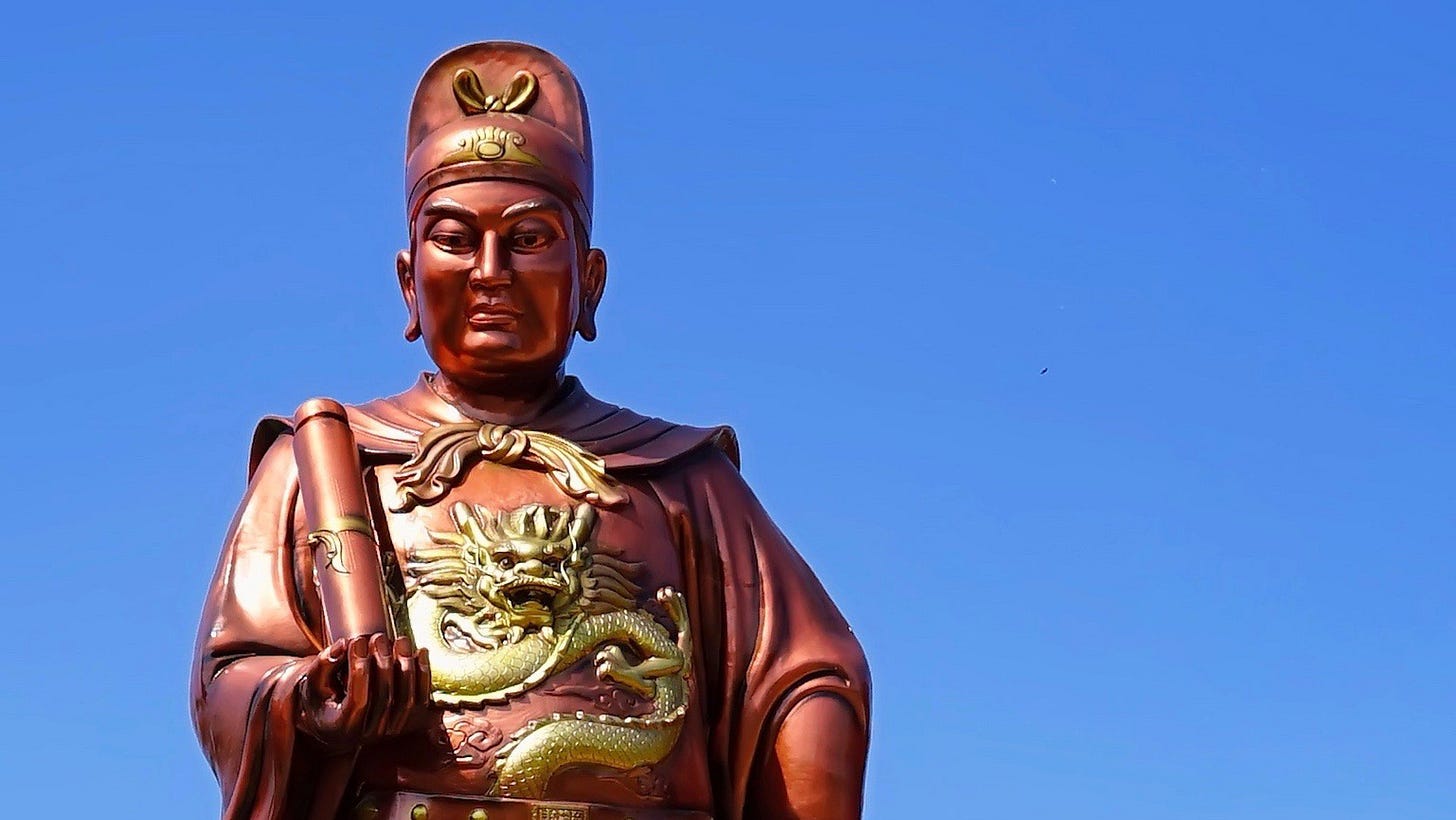Zheng He and The Treasure Fleet
The Magellanic Diaries 10

On December 21, 1521, the Spanish Nao Victoria, the last of the now-deceased Ferdinand Magellan’s original five ships still remaining and seaworthy to attempt a global circumnavigation home, and crewed by only 44 of the original 270 men, with a new captain, Juan Sebastian Elcano, set sail from their final destination, the “spice island” of Tidore, toward the Indian Ocean and the last perilous leg of a three year journey that would more than half their number still.
Among the 18 men to complete the Victoria’s voyage was Antonio Pigafetta, a Papal courtier to the Spanish Crown who had petitioned, in his hunger for exploratory adventure, to be added to the expedition’s rolls as a supernumerary. He ended serving as amateur cultural anthropologist, linguist, botanist, diarist, and champion of Magellan’s historic leadership. It is because of Pigafetta’s survival, and his journal, that we know the major portion of what we know of the Magellan-Elcano circumnavigation.
Though the Portuguese had been sailing and warring in the Indian Ocean and East Indies for two decades by that point, the Magellan crew had been encountering on the islands there, among the artifacts and practices of the native cultures, remnants seeded by another, still earlier foreign culture, the Chinese. Even earlier, the Portuguese Vasco de Gama, first of the Europeans to sail to India, had heard tell of long-ago visitors with beards who had preceded him. The Western focus these past five centuries has been on Portuguese, Spanish, and then British seafaring regimes, but in those Indies, Indian, East African, and even Persian Gulf waters, the Chinese had preceded them by a century.
In his foundational 1992 English language history of the expedition, Magellan, Tim Joyner offers a first, preliminary chapter devoted to the “Early Seafarers,” for millennia before the famed Western Age of Exploration. “The origins of blue-water sailing,” Joyner writes, “are hidden in the mists of history.” He proceeds briefly to cover a dozen historic and national traditions and sea migrations, from the ancient Egyptians and Phoenicians to Celts and Norsemen to the “Merchants of Venice.” Of the waters that interest us now, he tells us,
By 1500 B.C. the ancestral Polynesians had become adept at building and sailing swift, maneuverable watercraft beautifully adapted to the sea-girt environment into which necessity had driven them. In search of less populous islands, they moved eastward . . .. Sailing beyond the easternmost islands of Melanesia and crossing hundreds of miles of blue water, they became the first humans to reach Fiji. By 1300 B.C. they had reached Tonga, and by 1000 B.C., Samoa. Between 200 B.C. and A.D. 1000 they had settled in the Marquesas, Society, and Hawaiian Islands, Easter Island, and New Zealand.
The last three destinations meant voyages of well over 1000 miles of open ocean . . ..
It was thus already late in the history of seafaring that the Chinese ventured grandly into the Indies, Indian Ocean and beyond, yet nonetheless still a century earlier than the Portuguese and the Spanish. During his travels from island to island, Pigafetta heard from sea traders the Spanish encountered many accounts of the Chinese Middle Kingdom, and the Italian relates them with the enthusiasm of the inquisitive storyteller he was. Laurence Bergreen, author of a more recent, popular historical account of the expedition, the 2003 Over the Edge of the World, speculates that had Magellan lived, Pigafetta might have prevailed on the more than equally adventurous explorer to make a side journey to China.
That wasn’t to be the case, however, and it’s questionable, even if they had, that they would have learned anything of Zheng He, known as the "Three-Jeweled Eunuch," and his Treasure Fleet voyages.
Keep reading with a 7-day free trial
Subscribe to Homo Vitruvius by A. Jay Adler to keep reading this post and get 7 days of free access to the full post archives.


